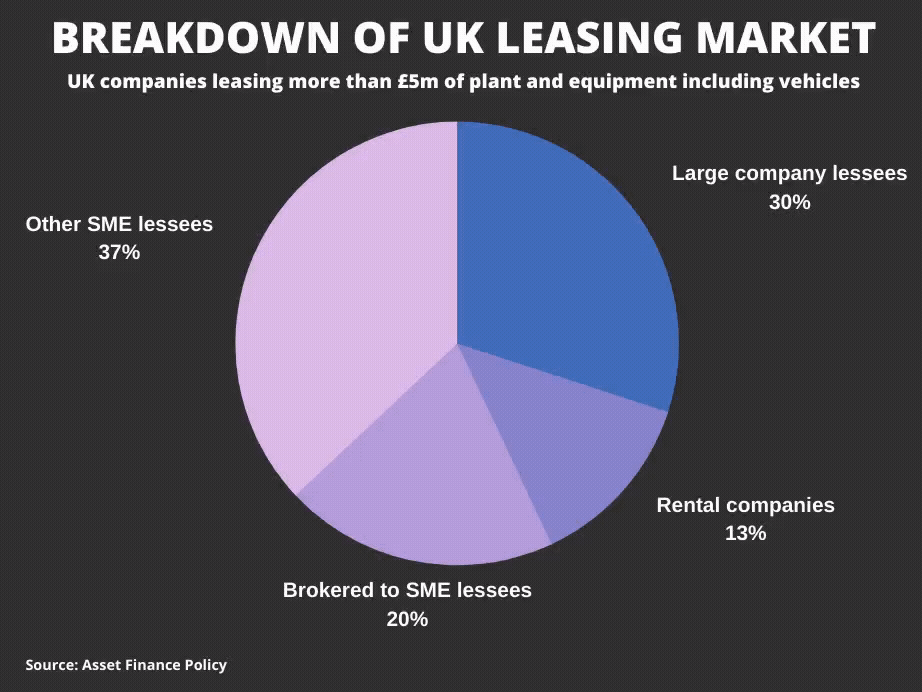
Now more than ever, we need to know who the big lessees are
Why do companies lease equipment? The potential reasons are many…the cash flow benefits, funding availability, flexibility, convenience, cost, and so on.
That all works for the small and medium-sized enterprises (SMEs) that make up over 99% of UK businesses, but what about the largest companies?
This includes the UK’s 8,000 firms with over 250 employees; they make up 48% of UK business turnover.
Given the Government-backed bounce back loans available to small businesses, they might be the first to need to lease new equipment in the recovery.
Do we know enough about who they are? Do we know why they lease?
To begin to address these questions, I have recently completed an extensive survey of the accounts of most UK listed companies and other large non-listed firms to identify their use of leasing.
It is helped by the extra disclosures that listed companies using the new lease accounting standard IFRS 16 now make, that usually provide a split of former operating leases between property and other assets.
This survey has resulted in a report, now available, that identifies the 425 UK firms leasing over £5 million of plant and equipment including vehicles.
I will save the details for those looking at the report, but I’m confident it includes most large UK lessees – probably the first time this information has ever been available to lessors.

Here are a few key findings based on this survey together with key data from the latest Asset Finance 50 industry ranking survey (this all refers to equipment and vehicle leasing i.e. non-property by large firms):
- Around 30% of the UK leasing market is to large companies as end-users of leasing.
- Additionally, around 13% of the market is to medium and large equipment hire companies, for them to hire out the kit to end-users
- The majority of firms have quite limited use of leasing, often ‘only’ £1-2 million, presumably comprising mainly fleet cars and some IT.
- A sizeable minority of firms makes more substantial use, to some extent in sectors where this is to be expected (e.g. transportation, construction), but the ‘superusers’ with leasing over £50m seem to span many industries.
- Many companies adopting IFRS 16 for the first time appear to have reduced their use of former operating leases, which could reflect accounting and other factors.
So what can we draw from this?
What’s clear from the inconsistent, but sometimes sizeable, use of leasing by the largest companies is that the reasons for leasing vary by lessee.
Compared to SMEs, I suspect they are less about cash flow, and more about specific aspects of asset management before, during and after the firm’s use.
Particularly with IFRS 16, there’s a need to help large firms identify and measure these reasons, so the extra accounting effort involved for former operating leases doesn’t cause the real economic benefits of leasing to be forgotten.
Knowing who the large lessees are, and identifying and supporting the benefits to them, should help the industry and the wider economy to recover.
The lessees survey, including the listing of the UK’s top 425 lessees, is now available to purchase.
* Julian Rose is director of Asset Finance Policy and the author of reports including the Asset Finance 50 UK and A to Z of Leasing and Asset Finance.








